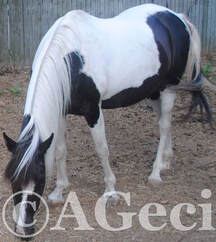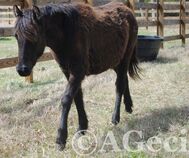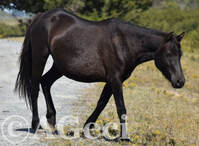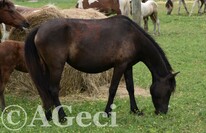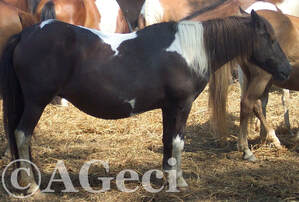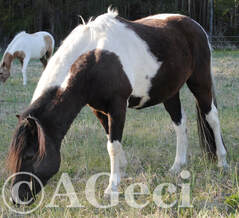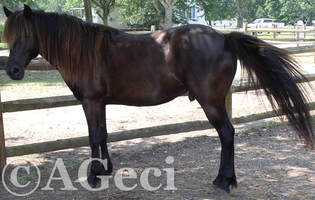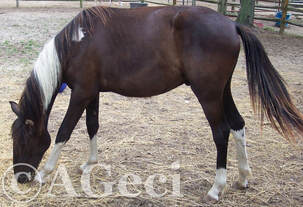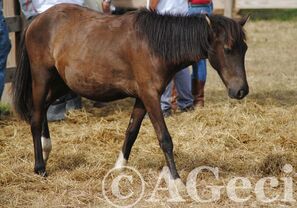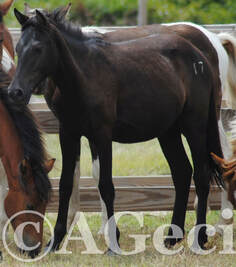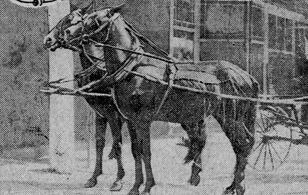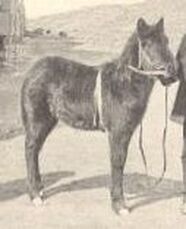Black (E) is one of the three base colors. Ponies are black, chestnut, or bay with other colors diluting/modifying the base color. Extension and agouti form the basis of all equine color. Extension determines whether or not a pony has black or not and agouti restricts it to the points. Black horses have the dominant form of extension and the recessive form of agouti. A Black pony must have a bay or black based parent in order to be black.
Many black ponies do not look true black due to sunbleaching or fading, which are known as fading blacks. The environment is hard on the look of black coats and particularly hard on the coats of the feral ponies that live outside 24/7. Some black ponies will fade more than others. There's various thoughts as to why some fade more, but it's not certain at this point. Some ponies will fade only at certain times of year. Sun bleached blacks will often have reddish "highlights" in their mane and tail.
The best way to determine if a pony is black or not is to look at the muzzle and flanks. The muzzle and flanks of a sunbleached black will be black. If the muzzle or flanks is brown than the horse is a bay or brown.
Black and bay have long been known to suppress white markings. In general black or bay based ponies will be less flashy than chestnut based ponies.
The best way to determine if a pony is black or not is to look at the muzzle and flanks. The muzzle and flanks of a sunbleached black will be black. If the muzzle or flanks is brown than the horse is a bay or brown.
Black and bay have long been known to suppress white markings. In general black or bay based ponies will be less flashy than chestnut based ponies.
Black is likely an original color in Chincoteagues as it is widespread and the breed was originally all solid dark colors. A 1891 article in the New York City newspaper The Sun stated that the ponies "are most frequently black, gray, sorrel, or dun [buckskin]." Leonard D. Sale wrote in 1896 in The Horse Review of Chicago that, "The prevailing colors are bay, brown, chestnut and light sorrel. A Washington Post article from 1902 stated that the prevailing colors were bay and black. A 1912 Baltimore Sun article stated that the ponies were "black for the most part". The Country Gentlemen wrote in 1916 that the predominant color of the ponies was black. Pony sale ads from 1919 advertised black, and black and white Chincoteague Ponies. A 1923 St. Petersburg Times article described the ponies as "bay, gray, dun [buckskin], black, and sorrel". A Delmarva Star article describing the 1930 Pony Penning described the ponies as "many colored", with blacks, browns, bright bays, and so many with spotted coats."
Black and black pintos are popular colors in Chincoteague Ponies. They're often regarded as rare but are actually fairly common colors.
Black and black pintos are popular colors in Chincoteague Ponies. They're often regarded as rare but are actually fairly common colors.
|
Solid black in weanling coat, fall coat, and summer coat.
CLG Ember (Surfer's Riptide x Black Pearl Pedigree |
|
Sunfaded solid black. Sire is a chestnut and dam is a bay.
Milly Sue (Surfer's Riptide x Leah's Bayside Angel) Pedigree |


